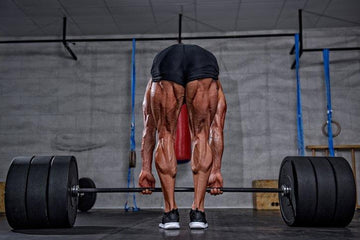

Rest Pause Drop: Prepare for Serious Growth
Table of Contents
Prepare for serious growth with rest pause drop sets. As much as we hate to admit it, eventually it gets tougher for us to build muscle. Our bodies adapt to the rigors of training and we hit what’s known as a plateau. Much like a plateau is an elevated area with a flat surface, we eventually hit a flat spot in our development and can’t move the needle. While you might start beating yourself up about this, know that it’s happened to everyone who’s trained and no one is immune to it. It’s a part of the process. If you’re currently stuck in your own training plateau then please keep reading because what follows could very well be the trigger you need to get going again. This isn’t going to be easy. As a matter of fact, it’s going to be quite intense but this is exactly what you need. To get what you haven’t had before, you have to push yourself in ways you haven’t before.
By Roger Lockridge
What is Rest Pause Drop (RPD)?
Rest Pause Drop is exactly what it appears to be. You combine two different intensity boosters, rest-pause and drop sets, into one super intense training method. There is a certain way I’ve developed this. It calls for a little bit of math, a partner or spotter to help you change weights quickly as well as support, and a serious mind-muscle connection.
First, you select your first major movement of the day. Let’s use back as an example and the exercise can be bent over barbell rows. You’ll do two warm up sets. The first is for around 15 reps or so. You should be in no danger of reaching failure here. Your goal is to feel every muscle that you want to target working. After a minute or so to rest, your second warm up set is for 10 reps and while you should go heavier, there should be no struggle to get the 10th rep. Rest for 90 seconds or so before starting what will be your RPD set.
Time to Work
Now it’s time for your Rest Pause Drop set. Load up the bar with as weight that should result in failure around the 8 rep mark. If you get 6 it’s ok but absolutely no less than that. Likewise, if you get 10 you need to up the weight. Perform your set until you reach failure. Failure in this case means you can’t complete another rep with proper form. Once you reach failure, wait for five seconds. After five seconds, perform more reps until you reach failure again. It likely won’t be more than 3-4 reps. When you reach failure for the second time, you’re going to reduce the weight by 25%. So if you were working with 200 pounds, you would go down to 150. If you need to, determine this number before you start training so you can save time. To save time, your partner or spotter should help you change weights and make sure you use proper form.
Once your weight is adjusted, you immediately resume lifting until failure again. Count out five seconds and try to get more reps. Once you reach failure for the second time at this weight, you’ll reduce the weight by the same amount that you did the first time. So if you reduced the weight by 50 pounds the first time, you’ll reduce it by 50 again. You’ll repeat the lifting pattern one more time of training to failure, resting five seconds, and lifting again. After this, your Rest Pause Drop set is finally over. Rest for two minutes before moving on to the next exercise.
So What Did You Do?
Instead of performing one single set to failure, you actually perform six smaller sets to failure thanks to the brief rest-pauses and drops in weight. You might perform as many as 30 reps over the course of this set with challenging weights so that’s a lot more volume and intensity than with a standard set.
Below is a sample RPD workout for back that you can try for yourself. Go for only 1 RPD set per exercise. Any more than that can make you more vulnerable to injury. Make sure you do the warm up sets as well so you can mentally prepare to target the working muscles when it comes time for your RPD set.
Sample RPD Back Workout
Bent Over Barbell Row – 2 warm up sets of 15, 10 reps. 1 RPD set.
One Arm Dumbbell Row – 2 warm up sets of 15, 10 reps. 1 RPD set.
- Perform entire RPD set with one arm before moving on to the other.
Wide Grip Pulldown – 2 warm up sets of 15, 10 reps. 1 RPD set.
Dumbbell Pullover – 2 warm up sets of 15, 10 reps. 1 RPD set.
Rack Deadlift – 2 warm up sets of 15, 10 reps. 1 RPD set.

















